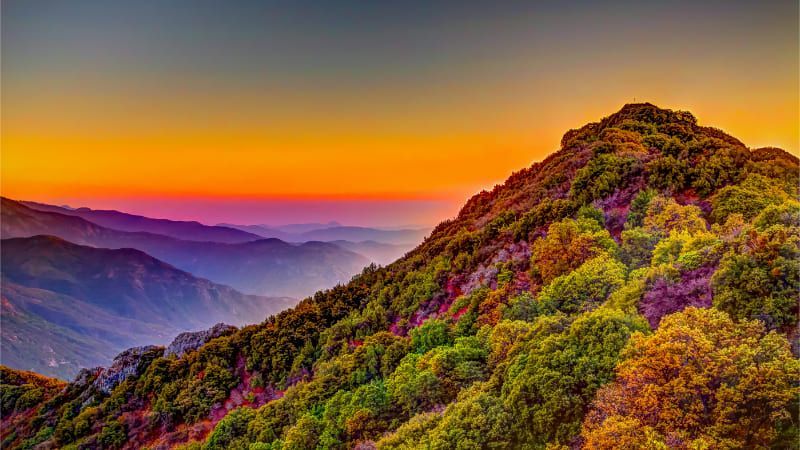Public Sector & Education
Helping to Shape the Future
Our team support public & educational institutions all over the world with complex transformation projects
We are committed to helping the public sector through a range of economic challenges that include high inflation, a lack of government funding, and political instability.
Six local councils in the UK have issued Section 114 notices since 2021 and 40% of universities are facing budget deficits. It is not unforeseeable that we will see closures in higher education in the near future. Cambridge Management Consulting has deep ties to the public sector and higher education. We care deeply about reversing the decline of our national infrastructure and educational heritage.
We have devised four pillars of advisory services to support the public sector through this turbulent economic climate. These pillars are backed by leading experts and include services for
Cost Reduction,
Networks & Innovation,
Cyber Security, and
Sustainability.
Our Public Sector team has a wealth of experience in all aspects of cost reduction, procurement, digital transformation, network design, sustainability & cyber security
We are proud of our links to the public sector, particularly our work with Pembroke College, University of Cambridge, and our on-going commitment to working with councils on city-wide decarbonisation. We are also dedicated to increasing diversity, equity & inclusion across the public sector and creating closer ties between institutions & their communities.
CONTACT THE TEAM
Case Study
University of Bristol
Cambridge Management Consulting was selected as the consulting firm to help the University establish and refine the requirements, design the network in collaboration with University of Bristol experts and lead the technical procurement for a Modern Network.
The current University of Bristol campus network requires significant modernisation to support the University’s Digital Strategy. All staff, students and visitors interact with the University's network every day, whether it's connecting a device to Wi-Fi, emailing a colleague, or running a session on the University’s Digital Learning Platform.
Cambridge Management Consulting's attention to detail ensured there were clear winners of the Procurement lots, with no challenges or disaffected potential suppliers. The winners of the three lots were all world-class organisations with a desire to support the University with its ambition to deliver a first-class service.
Cambridge MC have since assisted the University with other aspects of their Digital Strategy and continue to be engaged to help the University of Bristol transform.
How we help our clients
Our team of experts has decades of experience delivering services to the public sector and education
Local & Regional Decarbonisation
Our experts combine advanced analytics with deep expertise in environmental strategy to support decarbonisation of your public systems and operations—heat networks, energy systems, transport, and more.
Procurement for the Public Sector
Through the deployment of digital tools and agile strategies, we can assist you at every stage of resourcing your Local Government body, including negotiation, contract management, supplier selection, and cost reduction.
Human Resources for Local Government
Our holistic approach to HR combines advanced technology solutions with strategic insights to streamline HR processes, enhance data-driven decision-making, and improve overall operational efficiency and workforce resilience in your Public Sector bodies and institutions.
Capital Projects
Designed to maximise project outcomes using data-driven multi-year planning, comprehensive risk management, robust governance and digital enablement.
Recruitment for Public Activities
Our tailored service operates on a transparent, fixed fee model, eliminating any financial uncertainties and aligning with your budget requirements, helping to identify the most suitable candidates who can drive significant value to your organisation.
Planning
It is extremely resource-intensive to plan for large-scale infrastructure, urban planning and policy development in the Public Sector. Outsource some or all of the project management stages to a bespoke PMO and we can help you simplify and de-risk this process.
Property & Investment
Designed to meet the specific needs of public and educational institutions, our Property & Investment service is a cornerstone service for organisations looking to enhance their physical assets to future proof their long-term success and financial security.
Process Transformation & Change Management for Technology
By employing strategic assessments, technology integration, and process improvement, we can support you in both the planning and delivery stages of your public projects and programmes to streamline change initiatives, increase revenue, and maximise ROI.
Local Authority Trading Companies (LATCo)
Sitting on the fence between the Public and Private sphere, LATCos have access to a much wider market and audience. We can assist you to maximise your revenue and reach in both sectors.
Digitising the Public Sector
It is just as important for Public Sector bodies to build a resilient and scalable digital backbone as it is for Private Sector businesses; our digital practitioners drive innovation, efficiency, and sustainable growth, paving the way for a secure, digitally enabled environment.
Social Care
One of the main priorities for Public Sector bodies, if not the most important, is maintaining Social Care for children, adults, and the elderly. We have experts and resources to support you throughout the lifecycle of this on-going programme.
Cyber Resilience for Public Bodies
We focus on embedding robust security measures into the foundation of your IT systems, ensuring that resilience against cyber threats is integrated into the architecture of your technology environment.
Local & Regional Transport
Harnessing advanced analytics, planning methodologies, and stakeholder engagement strategies, we assist in creating comprehensive transport strategies and funding initiatives that enhance user experience, reduce environmental impact, and support regional economic growth.
Innovation & Collaboration between Public Bodies
Projects and Programmes have more impact when they harbour collaboration between different organisations. We can support you in promoting and establishing this in the Public Sector in order to increase innovation and shared resources.
Public Sector & Education
Case Studies




Our global Public Sector & Education practice is led by Craig Cheney
Managing Partner - Public Sector
With over 25 years of experience across both the public and private sectors, Craig is Cambridge MC’s Managing Partner for Public Sector & Education. In 2016, Craig became the Deputy Mayor of Bristol, serving in the Mayor’s cabinet with responsibility for Finance, City Economy, Culture, and Property. In this role, and working for the Local Government Association across the country, Craig has developed a consummate understanding of the public sector landscape. He excels at collaboration, business transformation and strategic thinking.
During his time in the Mayor's cabinet, Craig oversaw over £120m in budget savings though business transformation, restructuring, and service redesign. During this time, Craig sat as a shareholder of numerous council-owned companies, and led a £30m digital transformation exercise which earned Bristol’s recognition as the UK’s top ‘Smart City’. The Bristol City Leap program was a world first, a public/private partnership between Bristol and Ameresco, which will bring nearly £1bn of investment in decarbonisation and sustainability, recognised by government as a model for the rest of the country to follow.
Craig has also chaired the One City Economy Board, which brought together private sector businesses, the voluntary sector, equalities groups, and public sector institutions, supporting a quick recovery from the COVID-19 pandemic.
Our team can be your team
Our team of experts have multiple decades of experience across many different business environments and across various geographies.
We can build you a specialised team with the skillset and expertise required to meet the demands of your industry.
Our combination of expertise and an intelligent methodology is what realises tangible financial benefits for clients.
CONTACT THE TEAM
Industry insights

“They showed a genuine interest and concern for our business and investments, proactively going beyond the scoped engagement in a way we don’t see with other advisory firms.”
—InfraRed Capital Partners
"Showed a genuine interest & concern"
Get in touch with our
Public Sector & Education team today
Case Studies
Our team has had the privilege of partnering with a diverse array of clients, from burgeoning startups to FTSE 100
companies. Each case study reflects our commitment to delivering tailored solutions that drive real business results.
CASE STUDIES
A little bit about Cambridge MC
Cambridge Management Consulting is a specialist consultancy drawing on an extensive global network of over 200 senior executives in 22 countries.
Our purpose is to help our clients make a better impact on the world.
ABOUT CAMBRIDGE MC



















